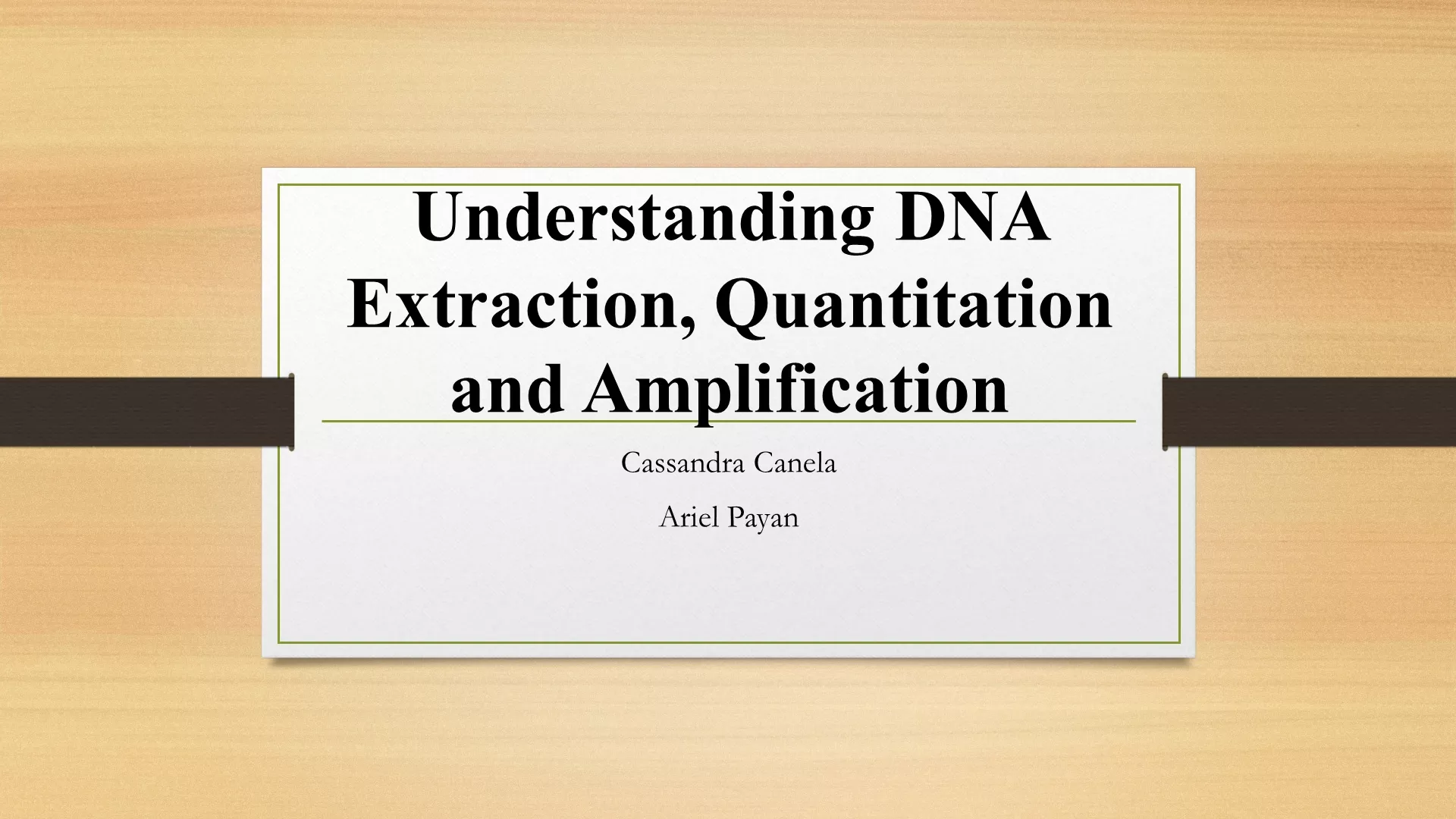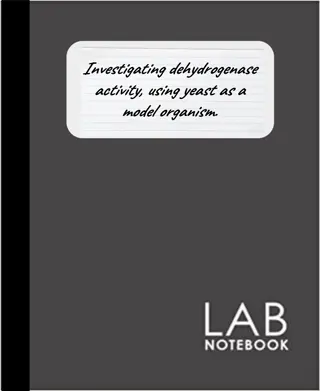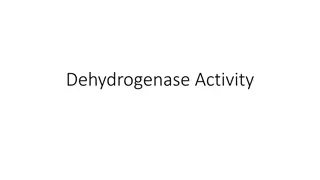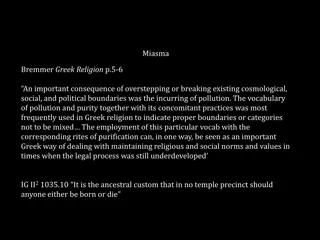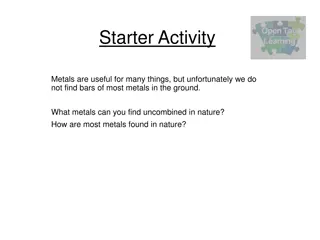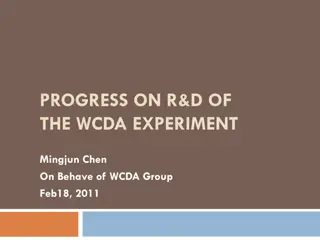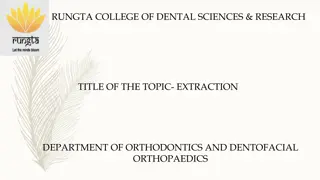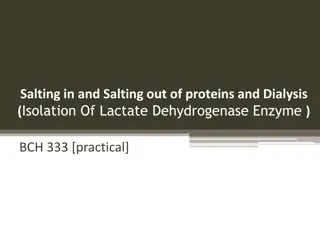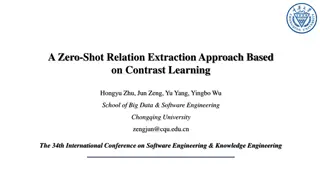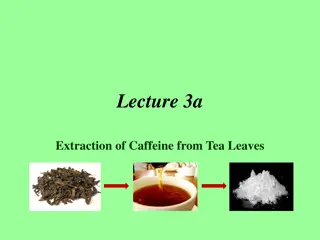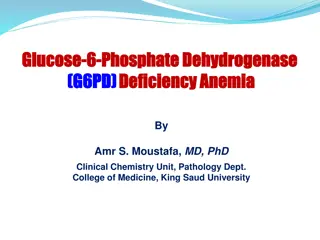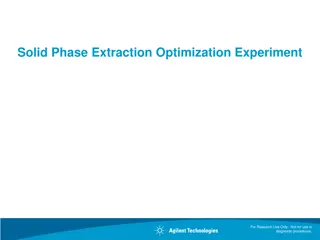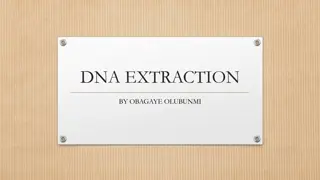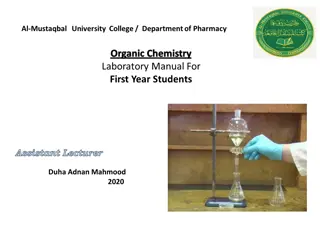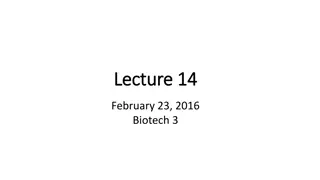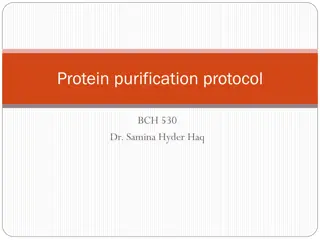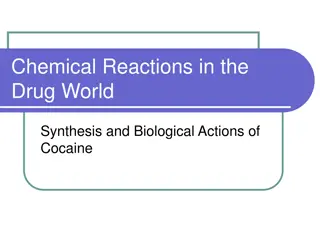Biochemical Methodology 530 - Lactate Dehydrogenase Extraction and Purification Experiment
This course focuses on the extraction and purification of lactate dehydrogenase (LDH) using a series of procedures involving tissue preparation, centrifugation, and ammonium sulfate precipitation. The methodology includes detailed steps from preparing the extraction buffer to isolating LDH in different fractions to further study its enzymatic activity. Through this experiment, students learn essential biochemical techniques and gain hands-on experience in protein purification methods.
Download Presentation

Please find below an Image/Link to download the presentation.
The content on the website is provided AS IS for your information and personal use only. It may not be sold, licensed, or shared on other websites without obtaining consent from the author.If you encounter any issues during the download, it is possible that the publisher has removed the file from their server.
You are allowed to download the files provided on this website for personal or commercial use, subject to the condition that they are used lawfully. All files are the property of their respective owners.
The content on the website is provided AS IS for your information and personal use only. It may not be sold, licensed, or shared on other websites without obtaining consent from the author.
E N D
Presentation Transcript
Biochemical Methodology 530 BCH Iman Alshehri
Introduction Iman Alshehri
Lactate dehydrogenase reaction In this course, you will use lactate dehydrogenase (LDH) as the subject of your studies. LDH (E.C. 1.1.1.27) catalyzes the nicotinamide cofactor-dependent interconversion of lactate and pyruvate:
Experiment 1 Extraction and Purification of Lactate Dehydrogenase Reagents Extraction Buffer: 0.1 M Tris-HCl (pH 7.4) ---Dissolve 12.114 g of Tris in 50 ml distilled water, adjust pH with concentrated HCl to pH 7.4, add distilled water to make the total volume 1000 ml
Experiment 1 Extraction and Purification of Lactate Dehydrogenase Procedure 1. Tissue preparation Cut ~30 g of muscle tissue from the tissue source (record the exact weight of tissue used). Cut the tissue into small pieces. Discard the connective tissue and fat. Add 150 ml of cold Extraction Buffer in a blender. note: (20% weight/volume). 2. Centrifugation Put the homogenized tissue/buffer mixture into centrifuge tubes (note:. Balance the tubes (i.e. make sure that each pair of tubes have the same mass). Centrifuge your homogenate for 15 minutes at 3000 x g RPM+
3- Measure and record the volume of the supernatant, and save three 1 ml aliquots (label the aliquots Crude Homogenate 4. Ammonium sulfate precipitation (Salting 40%) Slowly (over a period of ~15 minutes) add 22.6 grams of ammonium sulfate per 100 ml of supernatant to your supernatant. It is best to perform this step on ice) using a magnetic stirrer Avoid stirring too violently (proteins denature if subjected to shearing stresses; if you see bubbles forming, you are denaturing your proteins). Stir for an additional 30 minutes after you finish adding the ammonium sulfate (this gives the ammonium sulfate a chance to dissolve). Iman Alshehri
5. Centrifugation Centrifuge the sample (15 minutes at 14500 x g). Pour the supernatant into a separate container while keeping the pellet in the centrifuge tube. (The LDH should be in the pellet.) Note the volume of the supernatant (ml) This is fraction 1(F-1). 7. Ammonium sulfate precipitation (Salting 60%) Take F1- Bring it to 60% saturation with (NH4)2SO4 (12.0 g/100 ml). Stir for 30 minutes. Centrifuge as you did earlier. Suspend the pellet in 20 ml of cold buffer and note the final volume (ml). This is F2 Keep the supernatant and note the volume (ml). This is F3. . Iman Alshehri
Challenges Most tissues contain proteases (enzymes that degrade other proteins). Avoiding proteolytic damage to your protein can be difficult. Three techniques are commonly used to keep proteolysis to a minimum: 1) perform the purification in the presence of protease inhibitors. 2) perform the purification at low temperatures (4 C or on ice) 3) perform the purification in the minimal amount of time possible. you should keep your sample on ice or in the refrigerator as much as possible. Iman Alshehri
Purification Table Purification procedure Volume (ml) Protein concentration (mg ml-1) Total protein (mg) Specific activity (units mg protein-1) Total activity Fold purity % yield Crude Extract 1 100 Ammonium sulfate precipitation 40 % (sat) Ammonium sulfate precipitation 60% (sat) DEAE ION exchange Iman Alshehri


